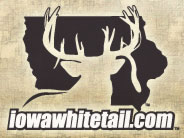blake
Life Member



From the Iowa DNR :
Deer Hunting Q&A: Spike Buck Reporting on Antlerless Licenses; Worn or Unreadable Tags; Where do I Attach that Tag?
Each fall many hunters find themselves dealing with situations which are unfamiliar to them and concerns arise as to how to handle them. Often hunters ask is it okay to tag a spike buck with an antlerless-only tag and how such an animal should be reported. First of all, any buck with that does not have a forked antler is considered to be an antlerless deer by definition and it is perfectly legal to tag it with an antlerless-only tag. When reporting the deer the hunter will be given the choice of designating it as a doe, button buck, shed-antlered buck, or antlered buck. Obviously, a spike buck is not a doe or a shed-antlered buck, and a button buck either has hair-covered bumps about the diameter of a dime or nickel on its head or hair-covered bumps with a ¼-¾ inch of exposed bone that forms a small point on top of the bump that is the developing pedicel from which future antlers will grow. So the only category that fits a spike buck is "antlered buck" and that is how these animals should be designated when reported regardless of the type of tag they have on them.
A worn or unreadable tag and how to deal with it is a fairly common question from hunters and also one that is fairly easy to correct. If you discover that your tags are no longer legible before you are out in the field you can take them along with your license to an ELSI dealer and have duplicate tags issued to replace the illegible ones.
Tags can be kept in good condition if they are kept in a license holder or zip lock bag and carried in a day pack or some other place where they are not regularly exposed to moisture or sweat. Tags that have resided in your wallet through the summer or early fall can easily become worn.
If you discover you have a worn transportation tag while in the process of tagging your deer, or if the tag becomes unreadable while on the deer, it can still be dealt with and the deer reported as required. The information needed to report your deer is also on the harvest report tag, if it is unreadable too, the nine-digit registration number for the tags is on the deer hunting license that was provided along with the tags (the license is less likely to become worn). The registration number should then be written on the tag(s). With the registration number, the hunter can then report the deer in a normal fashion and place the harvest report tag on the animal along with the Confirmation Number to complete the reporting process.
A tagging requirement that is new for 2008 requires a hunter who kills an antlered buck (by definition, a buck with a forked antler) to place the Transportation Tag on the animal's antler. It is recommended that the tag be placed on the antler beam either at the base or between two points. This new law was passed by the Legislature during their last session.
Hunters who take their deer to a processor or taxidermist have questioned how they are supposed to transport the deer carcass if the tags are on the antlers and the head has been removed from the animal in preparation for transport to the processor or has been retained by a taxidermist. In this situation the hunter would place the Transportation Tag on the animal's antlers and the Harvest Report tag on the leg of the deer (or carcass).
Hunters who have multiple deer licenses for the same season are reminded to look carefully at their tags to make sure they are using the correct tag before attaching it to their deer. Hunters with multiple antlerless-only licenses also need to make sure that they are using the tags that are valid in the county in which the deer was killed.
It is mandatory that all harvested deer must be reported using the harvest reporting system by midnight the day after the deer is recovered or before taking it to a locker, taxidermist, processing it for consumption, or transporting it out-of-state; whichever comes first.
This is the third year where hunters have reported their kill and it is a very important part of the deer management program in Iowa, playing a vital role in managing deer populations and providing hunting opportunities. Hunters can report their deer on the DNR website (www.iowadnr.gov), by calling the toll free reporting number (1-800-771-4692), or also at a license vender. For hunters with Internet access, the online reporting of the harvest is a quickest and easiest way to register your deer and hunters are urged to try this method.
The DNR often receives questions regarding the free and reduced fee deer licenses that are available to resident landowners and tenants (LOT deer licenses) of lands operated for agricultural purposes. In order to be eligible for LOT deer licenses certain requirements must first be met and the parcel(s) must be registered with the Iowa DNR and this can be accomplished either online or through the mail. The registration must be renewed every three years with a maximum of five LOT deer licenses available for the parcel(s) depending on the county location(s) of the land. One LOT any-deer license is available with the remaining LOT deer licenses being antlerless-only (the LOT antlerless-only licenses are not tied to any county quota). More information can be found in the current hunting regulations, by visiting http://www.iowadnr.com/wildlife/files/lot_contact.html, or by calling 515-281-5918.
Information on upcoming hunter safety courses can be found on the DNR website at http://www.iowadnr.gov/law/hunter/education.html.

TURN IN POACHERS!

TIP


